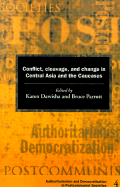Book contents
- Frontmatter
- Contents
- List of tables
- List of contributors
- Preface
- 1 Perspectives on postcommunist democratization
- 2 Democratization and political participation: research concepts and methodologies
- The Caucasus
- Central Asia
- 6 Democratization and the growth of political participation in Kazakstan
- 7 Kyrgyzstan: the fate of political liberalization
- 8 Thwarted democratization in Tajikistan
- 9 Turkmenistan: the quest for stability and control
- 10 Political development in Uzbekistan: democratization?
- Appendix
- Index
8 - Thwarted democratization in Tajikistan
Published online by Cambridge University Press: 01 June 2011
- Frontmatter
- Contents
- List of tables
- List of contributors
- Preface
- 1 Perspectives on postcommunist democratization
- 2 Democratization and political participation: research concepts and methodologies
- The Caucasus
- Central Asia
- 6 Democratization and the growth of political participation in Kazakstan
- 7 Kyrgyzstan: the fate of political liberalization
- 8 Thwarted democratization in Tajikistan
- 9 Turkmenistan: the quest for stability and control
- 10 Political development in Uzbekistan: democratization?
- Appendix
- Index
Summary
Independent Tajikistan is not a democratic country nor is it in the process of becoming one. Although the Soviet Union no longer exists and the Communist Party of Tajikistan no longer enjoys a monopoly of power, the current political system in Tajikistan bears a fundamental resemblance to the old Soviet order in the sense that a narrow circle of people dominates and uses methods, ranging from control of the mass media to the imprisonment or killing of opponents, that were highly developed in the Soviet era. In some cases the continuity is personal. For example, Rahmon Nabiev, who had been Communist Party first secretary in Tajikistan from 1982 to 1985, became the first president of independent Tajikistan. As under Soviet rule, the outward trappings of a constitutional democracy exist but not the substance. The new regime has written a constitution (1994) but does not respect civil liberties. It has held presidential and legislative elections (November 1994 and February–March 1995, respectively) but these were neither free nor fair. Though no longer all-powerful, the Communist Party is legal in Tajikistan and remains the country's single largest party.
In place of the old communist monopoly, patron–client networks operate the levers of power which are essentially those of the Soviet system. The Soviet concept of nomenklatura, the broad range of positions filled on the basis of the Communist Party's patronage appointments, survived the Soviet Union's demise and the end of the communists' monopoly.
- Type
- Chapter
- Information
- Conflict, Cleavage, and Change in Central Asia and the Caucasus , pp. 277 - 311Publisher: Cambridge University PressPrint publication year: 1997
- 15
- Cited by



